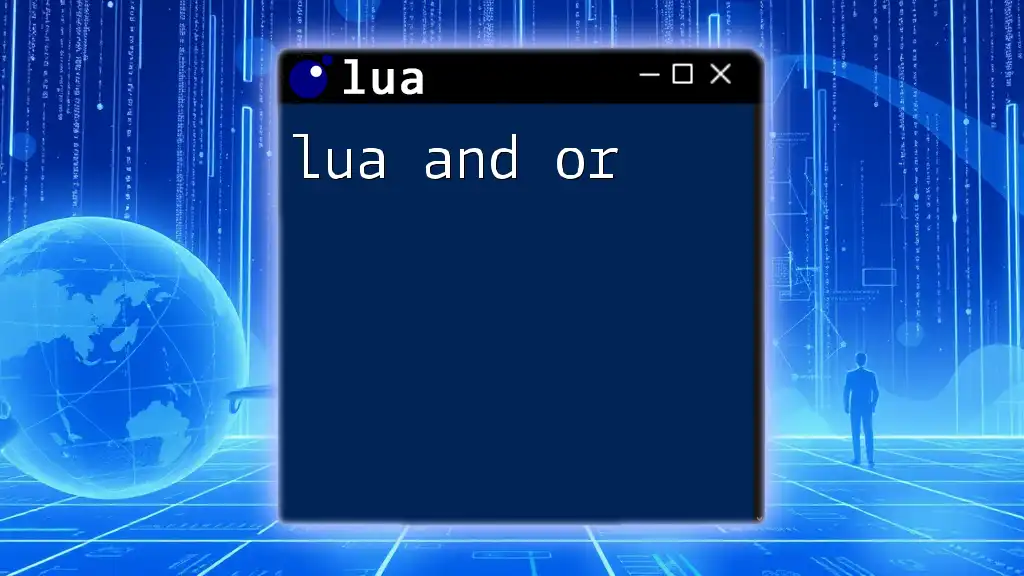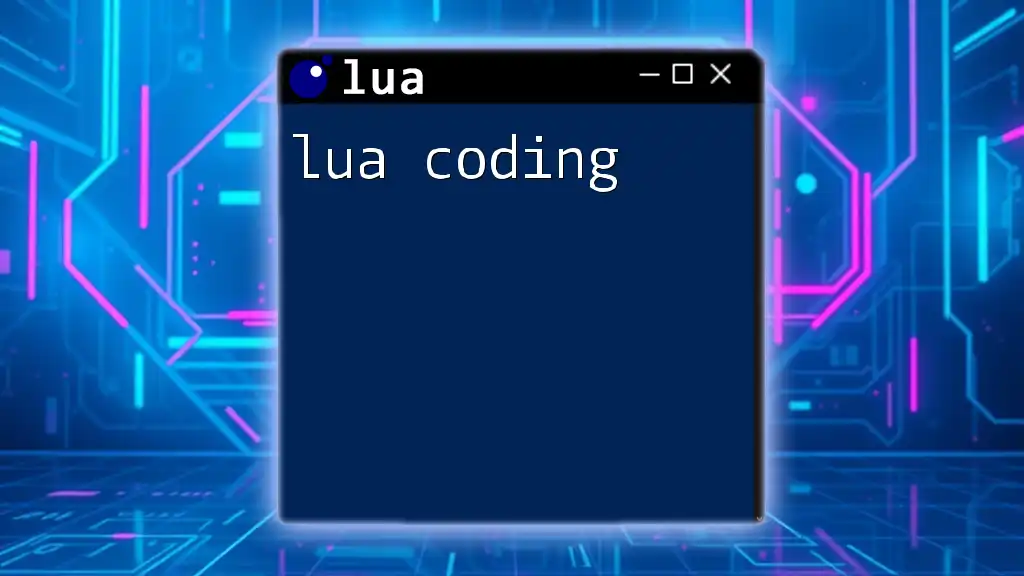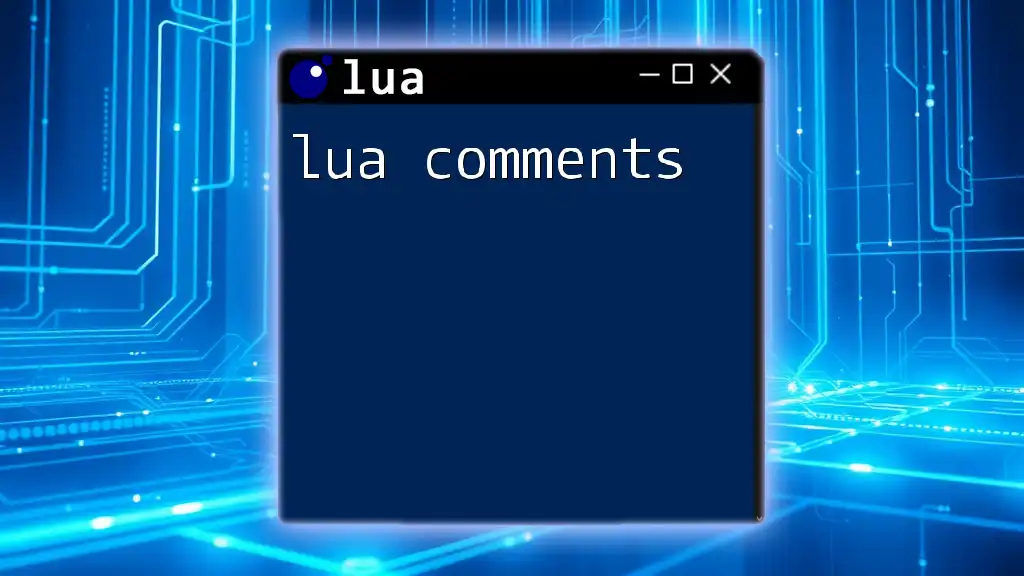Lua backend refers to the use of the Lua programming language for server-side programming, enabling efficient and lightweight execution of web applications and game development.
Here’s a simple example of a Lua function that starts a basic HTTP server:
local http = require("socket.http")
local response = http.request("http://localhost:8080")
print(response)
Understanding Lua in Backend Development
What is Lua?
Lua, a lightweight and embeddable scripting language, was created in the early 1990s in Brazil. Known for its simplicity and efficiency, Lua has become a preferred choice for various applications, especially in the gaming and web development sectors. Its design encourages flexibility and offers quick execution time, which is critical for backend tasks.
Advantages of Using Lua for Backend Development
Using Lua for backend development has several compelling advantages:
- Lightweight and Fast Execution: Lua is designed to be small and fast, which makes it ideal for systems with limited resources or where performance is a priority.
- Easy Integration with Other Languages: Lua can be easily integrated with C/C++ and other programming languages, making it an excellent choice for extending functionalities often necessary in backend systems.
- Simple Syntax and High Productivity Potential: The language syntax is straightforward, allowing developers to go from concept to implementation rapidly. This boosts productivity across development teams.
- Extensibility Through C Libraries: Lua’s ability to call C functions enables the development of high-performance applications while maintaining the ease of scripting.

Setting Up Your Lua Environment
Installing Lua
Installing Lua varies depending on the operating system you use. To start, download the Lua binaries from the official Lua website or via a package manager.
Windows
An easy way to install Lua on Windows is through the Lua for Windows package, which includes the Lua interpreter and other essential tools.
macOS
For macOS users, the simplest installation method is using Homebrew:
brew install lua
Linux
On most distributions, you can install Lua via APT:
sudo apt-get install lua5.3
Setting Up Your Development Environment
Once Lua is installed, you will want a productive development environment. Some recommended text editors and IDEs include:
- VSCode: Offers extensive extensions for Lua support.
- ZeroBrane Studio: A lightweight Lua IDE that provides debugging capabilities.
Configuring your editor to support Lua syntax highlighting and linting can significantly enhance your development experience.
Installing Required Libraries
To simplify Lua development, using LuaRocks, Lua's package manager, is essential. With LuaRocks, you can easily install and manage libraries.
To install LuaRocks:
- Download or clone the release from the official repository.
- Build and install it:
cd luarocks-x.xx.x
./configure; make; make install
For example, to install the LuaSocket library, you can run:
luarocks install luasocket

Getting Started with Lua Backend Development
Lua and Web Servers
Lua is particularly suited for web server applications. Among the popular frameworks, Lapis and Sailor are outstanding choices. These frameworks allow you to build efficient web applications quickly, making use of Lua's straightforward nature.
Building Your First Lua Web Application
Creating a web server using Lapis is an excellent way to demonstrate Lua's potential. Below is a simple example to get started:
local lapis = require("lapis")
local app = lapis.Application()
app:get("/", function()
return "Hello, World!"
end)
return app
In this example, we create a basic web application that responds with "Hello, World!" when accessed at the root URL. This highlights how easily we can define routes and responses in Lapis.

Handling Data in Lua Backend
Working with Databases
For many applications, data storage is critical. Lua supports various databases, including SQLite, MySQL, and PostgreSQL. You can leverage libraries like LuaSQL to facilitate interactions with these databases.
Example of Connecting to a Database
Here’s how to connect to an SQLite database and fetch user details:
local sqlite3 = require("sqlite3")
local db = sqlite3.open("test.db")
for row in db:nrows("SELECT * FROM users") do
print(row.name, row.email)
end
db:close()
This simple script executes a query to retrieve all users from an SQLite database and prints their names and emails. It showcases accessing the database and processing results through Lua.

Advanced Topics in Lua Backend
Asynchronous Programming with Lua
Asynchronous programming is vital for responsive backend services. Lua supports coroutines, which can perform non-blocking operations, enabling your applications to handle multiple tasks efficiently. Understanding how to manage coroutines is essential for developing scalable applications.
Error Handling in Lua
Robust applications must handle errors gracefully. Lua provides functions like `pcall` and `xpcall` to catch errors without crashing your application. Here is a brief example:
local status, err = pcall(function()
-- Code that might throw an error
end)
if not status then
print("Error: " .. err)
end
Using `pcall`, you can encapsulate code that may fail while maintaining control over error output, allowing for smoother user experiences.

Testing and Debugging Lua Applications
Writing Unit Tests
Unit testing is essential for maintaining code quality. The `busted` testing framework facilitates writing and running tests in Lua effectively. Below is an example of a simple test case:
describe("Example Test", function()
it("checks if true is true", function()
assert.is_true(true)
end)
end)
This structure makes it easy to outline what your tests cover, and `busted` provides concise output on the results.
Debugging Techniques
Effective debugging is critical for any programming language. Lua offers debugging tools like the built-in debugger in ZeroBrane Studio. Using print statements or logging for tracking the application flow is also a common strategy in Lua debugging.

Deployment and Hosting Lua Applications
Packaging Your Lua Application
For deployment, consider packaging your application for easy distribution. Tools like Docker can help create a containerized version of your app to ensure consistency across environments.
Monitoring and Performance Optimization
Once deployed, maintaining performance is crucial. Monitoring tools—such as those that work with logging frameworks—can help track performance and detect issues. Investing in caching strategies (like using Redis with Lua) can help reduce response times and improve app efficiency.

Conclusion
Utilizing Lua for backend development offers numerous benefits, including lightweight execution, ease of integration, and a straightforward syntax. This guide aims to provide essential information for developers looking to explore Lua as a backend solution. By understanding the setup, application creation, data handling, advanced programming concepts, testing methods, and deployment strategies, you are well on your way to harnessing the full potential of Lua in backend development.
For further improvement, consider enrolling in dedicated Lua courses to deepen your understanding and enrich your programming toolkit. You’ll find that creating robust backend applications in Lua is not only achievable but also a highly rewarding experience.

Additional Resources
For continued learning, explore recommended books, websites, and communities that focus on Lua development. The official Lua documentation is a great starting point, along with tutorials to enhance your skills further.

















